The private financing model known as RAB is to be used to raise cash for the new nuclear power station, reservoirs and the Lower Thames Crossing. As part of ¤ÖÑÇèÓú½ãs Funding the Future series, Joey Gardiner looks at lessons learnt on the Thames Tideway project to find out why RAB is now all the rage
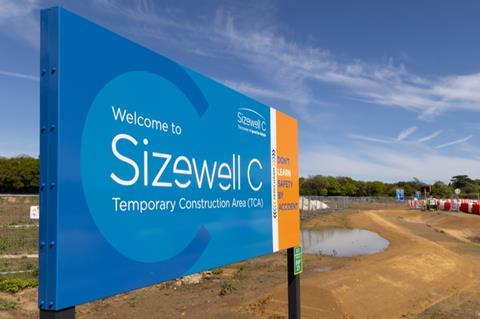
Last week energy secretary Ed Miliband promised a ãgolden ageã for nuclear power as the government confirmed it is pushing ahead with the ôÈ14.2bn Sizewell C project in Suffolk. It has done this despite the fact that investor interest in building nuclear in the UK has nosedived in the wake of EDFãs 2016 deal to build Hinkley Point C in Somerset.
That scheme is now massively over budget on construction ã EDF has said it will cost almost ôÈ47bn (in current prices) compared to the ôÈ10bn the firm said it would cost in 2010.

While the ôÈ92.50 ãstrike priceã deal with the government ã a guarantee to buy energy at a certain price ã has protected bill payers to an extent from these cost rises, it also ensured a big risk premium was priced into the job from the start, making nuclear power expensive, with the saying a risk-sharing approach could have been cheaper. The deal ãlocked consumers into a risky and expensive project with uncertain strategic and economic benefits,ã the NAO said.
Either way, as EDF and other nuclear promoters have struggled financially, no one has rushed to repeat the exercise in the decade since. Until now.
So, what has changed in order to make Sizewell C ã a project EDF once promised would be operational by 2025 ã viable again?
The difference, as Miliband confirmed to the House of Commons last week, is that Sizewell will be financed under a totally different model to Hinkley Point. Known as the regulated asset base, or RAB, model, it is a tried and tested system for raising private finance from bill payers for large programmes of infrastructure investment.
The RAB model is that used since the privatisation of UK utilities to draw investment into monopoly providersã infrastructure, while continuing to ensure value for money for their consumers. Crucially, it is also the model under which the ôÈ4.6bn Thames Tideway project has been successfully delivered over the past decade.
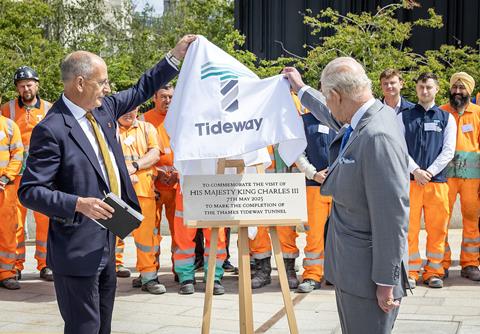
The Thames Tideway Tunnel is a 25km ãsuper sewerã built along the tidal section of the river between Acton and Abbey Mills. It is designed to capture almost all the raw sewage and rainwater which would otherwise overflow into the river during heavy rain. Construction began in 2016 and it finally became operational at the start of this year.
While the exact form of RAB to be used is not yet clear, the government has that using this model could save bill payers up to ôÈ80bn on new nuclear compared to a Hinkley Point C-style system. So, what is the model, how can it make projects cheaper, and what are the prospects of it being used on other major schemes?
The RAB utility model
The RAB model has been responsible for ensuring billions of pounds worth of investment in privatised utilities over the past four decades. While critics of the service provided by water and power companies would certainly question just how effectively it has operated in that period, no one can question whether or not it has successfully levered in private cash.
For example, water industry trade body Water UK estimates that UK firms invested ôÈ236bn of privately raised cash in water networks between 1989-90 and 2023-24, all generated under the RAB model.
Beth West, director at Navigate Advisory and an adviser on ¤ÖÑÇèÓú½ãs Funding the Future initiative, worked on Thames Tideway briefly prior to the construction phase. She says: ãItãs a really common model, used by utilities all the time, such as for power stations. It totally makes sense when youãve got a customer paying through a bill for a service.ã
In basic terms, the RAB model works in utilities where you have a monopoly company that looks to raise money against its existing assets, its income and its operational track record to invest in its infrastructure. A regulator is established in order to ensure that costs and profits are controlled, given the lack of competitive tension, while providing investors with assurance over financial stability.
The idea is that companies borrow money, with investors paid a return out of a surcharge on customersã bills. The regulator vets spending to ensure that only qualifying investment is allowed to be added to the ãRABã and thereby clawed back through customer bills.
The key conditions required for a RAB model to work are, therefore, a base of customers (typically, utility bill payers), a regulator seen as credible by the market, a monopoly, and a market willing to fund the company on the basis of regulated returns.
Project RAB
The innovation that happened around Thames Tideway was to apply this logic to a single major project, rather than to a company running a large programme of works. Tideway took advantage of bespoke legislation (namely the catchily-entitled Water Industry (Specified Infrastructure Projects) (English Undertakers) Regulations 2013) created to allow such a venture to happen.
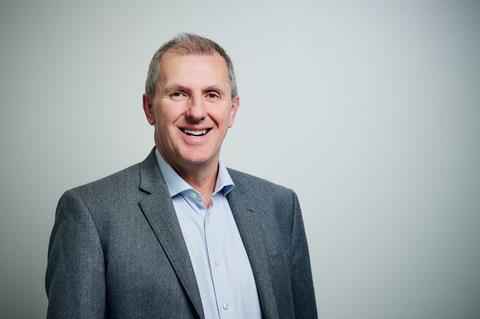
What this allowed was for a special purpose vehicle to be established to build Tideway, that also became a regulated water company able to borrow under a RAB structure, with money paid back through Thames Water bills. Matthew Duncan, chief financial officer at Tideway, says this regulated structure, which capped costs and returns within known bounds, automatically provided a much greater level of confidence to potential shareholders and investors.
A key part of the investor attraction to the RAB model ã compared to traditional project finance ã is that investors can start getting a return on their money from the day construction starts. The regulator allows bill payers to start getting charged from day one, as opposed to at project handover, which in the case of Tideway would have meant a delay of 10 years.
This means that institutional investors are much more likely to be interested, and Tidewayãs Duncan says ôÈ600m has already been generated from bills through the RAB model during the construction phase, keeping borrowing costs down.
Craig Elder, partner at law firm Browne Jacobson, says: ãOne key advantage of RAB is that borrowing costs can be reduced by passing construction costs onto consumers through bills before the project is completed ã reducing the need for borrowing and interest payments through the riskier construction phase.ã
Tideway in the end secured ôÈ1.3bn from its initial investors, and has drawn in a further ôÈ3.6bn from lenders and the bond markets, Duncan says.
Amar Qureshi, joint CEO of infrastructure consultant Agilia, which is now advising the government on Sizewell, formerly led the Thames Water team involved in creating the structure for Tideway. He says the structure, given the regulatory mechanisms and incentives, allows investors to treat projects as ãmore akin to investment in a newly established regulated utility company, as opposed to an investment in an infrastructure project exposed to big gnarly construction risksã. Crucially, this helps reduce the cost of borrowing money.

The structure allowed Tideway to reduce borrowing costs to such an extent that initial estimates in 2011 that the project would see ôÈ80 added annually to Thames Water customersã bills has proven way over the top ã in the end customers will pay just ôÈ25 per year (in 2016-17 prices).
The reduction in the cost of capital was ãabsolutelyã behind this saving, says Duncan. ãIt made such a big difference.ã
Government backing
However, it is by no means the RAB model alone that gave investors such security. Tideway also benefited from a significant government support package. This took the form of a range of guarantees where the government agreed to step in ã scenarios described by Agiliaãs Qureshi as ãhigh impact but low probabilityã.
Most significantly perhaps, the government said it would cover costs if the construction price rose by more than 30% (or ôÈ960m) above the target cost of ôÈ3.2bn (at 2014-15 prices).
ãAs we developed the model for Tideway, it became clear that, on its own, it wouldnãt quite drive the pricing benefits that we wanted without a government support package,ã says Duncan. ãBecause with the RAB model you have quite a heavily regulated return, investors want to know how those construction risks are going to be managed ã particularly those high impact low probability events. The support package gave that confidence.ã
ãOne key advantage of RAB is that borrowing costs can be reduced by passing construction costs onto consumers through bills before the project is completedã
Craig Elder, partner at law firm Browne Jacobson
Dr Alex Budzier, a former McKinsey consultant, now fellow in management practice at the Saû₤d Business School, University of Oxford, says: ãThis model is different to traditional procurement, in that essentially youãve got the capital provided by the private sector, and the risk taken by the public sector. The RAB with that support is a powerful combination.ã
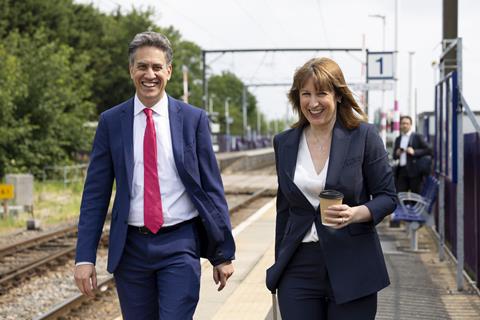
This combination resulted in an investment-grade rating for the Tideway business which kept the cost of borrowing money low. The Tideway deal was nevertheless widely criticised for opening the taxpayer up to potentially limitless liabilities.
In the event, build costs on Tideway have risen, in part because of a ôÈ200m hit from closing and then reorganising sites during the covid pandemic. The final outturn price is now expected to be ôÈ4.55bn at current prices.
However, with inflation adjusted back to 2014-15 prices, this puts the cost at around ôÈ3.85bn, says Duncan, well within the point that would trigger the support package. So, the taxpayer will not have paid anything, but yet customers will have felt the benefit of the guarantees in lower bills.
Amar Qureshi thinks the significance of the RAB structure should not, however, be underplayed, despite an understandable focus on the government support package. He says the model allowed a more realistic approach to managing construction costs, in which all parties could respond to the true cost of carrying out the works, with external independent regulation ensuring this was done fairly.
In comparison, a traditional project finance approach would seek to pass the majority of construction risk onto a contractor, with the response being simply to price in a big contingency, paid whether those costs arose or not. Or to underprice the job, relying on pushing up the price post award.
He says: ãAs a licensed special purpose vehicle, youãre remunerated via the RAB for effective expenditure and cost management. You arenãt expected to take cliff-edge risks, so your base returns arenãt dependent on whether something you canãt control or reasonably anticipate arises during the construction of the project.ã
Sizewell and beyond
The government ã actually the previous Conservative government ã has already legislated to allow the RAB model to be used in the nuclear sector. The Nuclear Energy (Financing) Act 2022 sets out the statutory provisions necessary for setting up a new regulator to oversee the construction of Sizewell C ã and any other power stations that come forward.
Miliband told the House of Commons last week that the RAB system was ãthe right system [for building Sizewell C] and will cut the cost compared with Hinkley Point Cã.
Certainly, some in the sector agree with him. Budzier says the system would work well for very big projects such as Sizewell C, which is large enough to generate the logic for its own quango to regulate it, and where ãthe risks are quite large, but we do understand themã.
Qureshi says it is ãabsolutelyã the case that an ãappropriately structured RAB model with cover for high impact low probability risksã could ãsecure low cost finance to help deliver much needed infrastructure such as Sizewell C, reducing the cost impact on bills for customers and consumers.ã An analysis by the Department for Business, Energy and Industrial Strategy published in 2021 found that a RAB model could save between ôÈ30bn and ôÈ80bn on the cost of new nuclear stations for bill payers, compared to using the system that funded Hinkley.
But, in terms of major projects, it is of course not only Sizewell C that could take advantage of the RAB. The water regulator Ofwat is exploring using it to fund the proposed 30 million cubic metre reservoir outside Abingdon, known as the South East Strategic Reservoir Option (SESRO), with some of the nine further reservoirs the government is considering before 2050 also looking over the model.
ãI do see options for using this model in other sectors such as nuclear, but thereãs got to be a strong understanding of the revenue streams itãs going to bring inã
Matthew Duncan, chief financial officer at Tideway
An assessment of SESRO by Agilia in 2022, undertaken for Thames Water, found the project ãmay offer the potential to generate greater value for moneyã through the particular form of RAB that was used on Thames Tideway.
In addition, National Highways has publicly stated that RAB is one of three funding models it is considering for the ôÈ10bn Lower Thames Crossing project ã with most believing it is the favoured option.
The right model
RAB does, of course, have its downsides. And it is not suited for every situation ã social infrastructure construction, for example, does not have the customer revenue stream against which investors can invest.
And the requirement for a regulator, too, imposes a large cost overhead. The structure also relies on faith that the regulator will do its job ã a faith being sorely tested in the wider water sector right now, given the situation in which Thames Waterãs wider business finds itself.
West says: ãIt [RAB] needs to have a strong regulator because youãve got a monopoly provider. Their job is to ensure that the company is making the right investments ã if theyãre not strong enough, itãs a problem.ã
Both the structuring of contracts and the offer of government guarantees, all taking risk off the private sector, also open up questions about what happens when the worst does happen. Browne Jacobsonãs Elder says: ãThe most obvious downside is the transfer of risk away from the contractor.

ãThere has been criticism that allocation of excess construction costs to taxpayers, for example, constitutes a ãblank chequeã for the developer.ã
Hence Tidewayãs Duncan says that, while RAB can work for nuclear, there are a number of necessary conditions that should be adopted, including certainty over revenue streams and an understanding of the construction risk.
He says: ãI do see options for using this model in other sectors such as nuclear, but thereãs got to be a strong understanding of the revenue streams itãs going to bring in ã some ability for investors to get visibility. Thatãs a really big driver of whether it will work.
ãAnd thereãs got to be some understanding of construction risk, and how manageable that will be.ã
West says that, while RAB makes ãtotal senseã for reservoirs, nuclear remains ãchallengingã. She adds: ãItãs just because of cost overruns and the scale. Itãs not to say itãs not possible, but itãs just theyãre big, they always overrun, and they take a really long time.ã
The RAB model has undoubtedly proved effective at drawing in cheap funding for Tideway, keeping costs down for London bill payers. ãItãs about having the right model for the right circumstance,ã West says.
Whether it becomes a force in the financing of mega-projects may be dependent on what projects end up getting the go-ahead.
Funding the Future
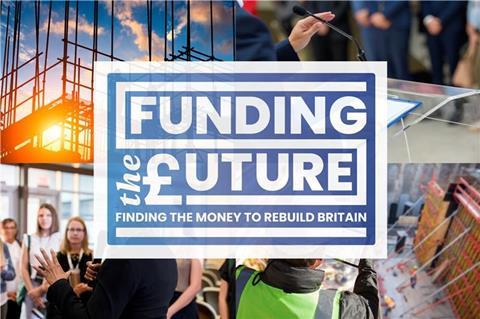
Over the next few months ¤ÖÑÇèÓú½ãs Funding the Future coverage will seek to share learning, consult with industry and collect ideas from readers. This will culminate in a special report to be published at our ¤ÖÑÇèÓú½ the Future Live Conference in London on 2 October - click here to book your tickets now.
To share your ideas of new funding models, email carl.brown@assemblemediagroup.co.uk. To find the campaign on social media follow #¤ÖÑÇèÓú½fundfuture.























No comments yet